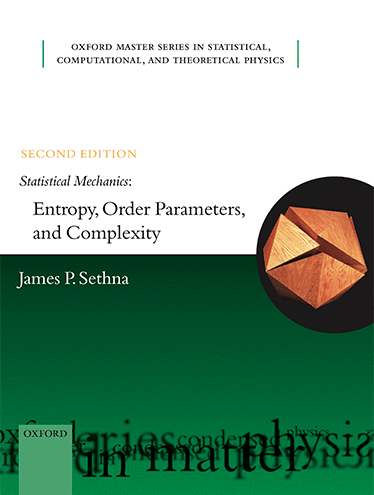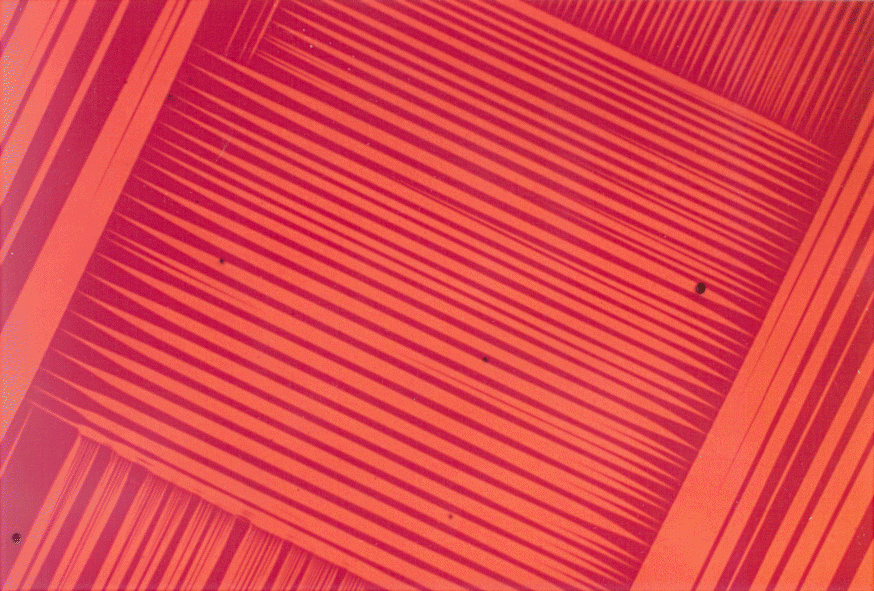
Available as pdf, and from Oxford University Press.
James Sethna
- Random Walks and Emergent Properties
- Self-similarity and fractals
- Temperature and Equilibrium
- Invariant Measures; Ergodicity
- Jupiter! and the KAM theorem
- Entropy
- Does Entropy Increase?
- Shannon Entropy, Entropy of Glasses
- Life, Heat Death of the Universe, & Black Holes
- Free Energies and Ensembles
- Canonical, Grand Canonical, and Gibbs
- Arrhenius laws and barrier crossing
- Quantum Statistical Mechanics
- Bosons: Bose Condensation and Superfluids
- Fermions: Metals, White Dwarves, Neutron Stars
- Computational Stat Mech: Ising and Markov
- Monte Carlo, Metropolis, Wolff
- Stochastic Chemistry: Cells and Gillespie
- Networks and Percolation
- Order Parameters, Broken Symmetry, and Topology
- Homotopy Theory and Topological Defects
- Excitations and Goldstone's Theorem
- Dislocations, Disclinations, and Vortices
- Deriving New Laws
- What is a Phase?
- Symmetry and Analyticity: Landau
- Correlations, Response, and Dissipation
- Fluctuation-Dissipation
- Causality and Kramers Krönig
- Abrupt Phase Transitions
- Nucleation theory: Complex Free Energies
- Coarsening; Dendrites and Snowflakes; Martensites
- Continuous Phase Transitions
- Universality and the Renormalization Group
- Scale Invariance and Fractals
- Percolation, Bifurcation Theory, Routes to Chaos
- New, unpublished exercises
- Errata, corrected in second printing (1/2007)
- Computer exercise hints, software
- Figures for exercises
- Incorporating the last 50 years into the statistical mechanics curriculum talk (ppt).
- Jacob Alldredge's This Is Stat Mech
- Chen Wang's proof that the Origami Microstructure is unfoldable in three dimensions (exercise 11.7).
- An answer key to most of the exercises is available to instructors on request (e-mail sethna@lassp.cornell.edu for the solution manual). Please do not post answers to exercises from this textbook on the Web, or distribute them in electronic form.



